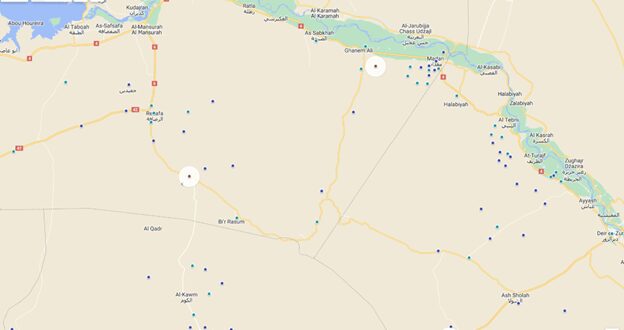ISIS carried out at least nine confirmed attacks in July in the Homs, Hama, Raqqa, Deir Ez Zor, and Aleppo governorates. These attacks killed at least 13 pro-Assad regime soldiers and nine civilians and wounded at least four more soldiers. There were also two high quality* attacks carried out during the month. The level of violence decreased sharply in July, falling to a level not seen since June 2023. Thus, July marked the end of ISIS’s nine-month campaign of escalating attacks across central Syria. This campaign became record breaking in early 2024, as ISIS cells continually shifted their focus across eastern Homs and Deir Ez Zor, heavily pressuring key regime positions despite increased Russian, Iranian, and Syrian operations. This campaign forced the Russians to maintain a frequent air campaign over the Badia in support of Iranian and Syrian ground troops, while the Syrian regime deployed significant reinforcements, especially in early summer to eastern Homs and Deir Ez Zor – namely, the 4th Division’s Ghaith Forces and the 25th Division (former Tiger Forces). These anti-ISIS operations and the consistent losses sustained by ISIS over the course of 2024 resulted in the first clear decline in ISIS operations in the second half of June. This pattern accelerated in July, when the group carried out only nine attacks most of which utilized more ‘passive’ methods like mines or improvised explosive devices (IEDs).
In June, regime forces established new defensive positions around several critical areas in Homs, particularly the Doubayat and Kawm axes, which continued to reduce ISIS activity along these fronts. The heavy regime focus on eastern Homs appears to have finally paid off, with Homs no longer being the most active ISIS front for the first time since September 2023. July was also the first month this year in which no attacks took place inside urban centers in Deir Ez Zor or Raqqa. This reduced level of activity will likely continue into the fall as ISIS looks to rest and refit its cells while also balancing its resources between the now more challenging Badia and the potentially more lucrative northeast Syria front.
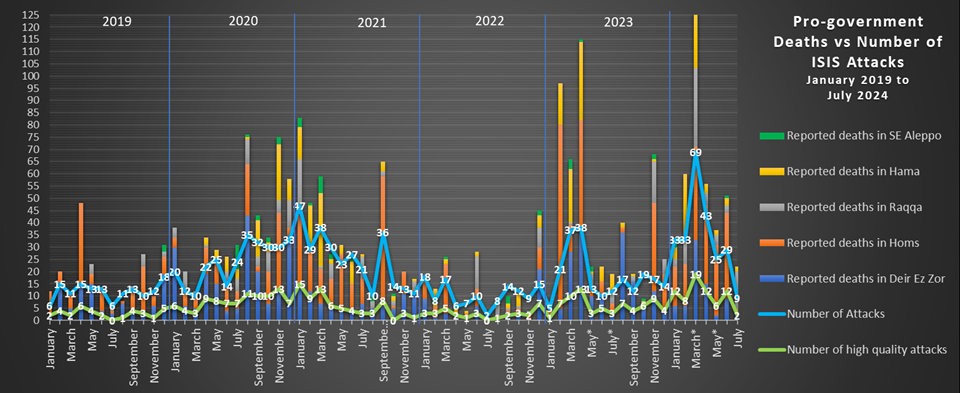
Confirmed ISIS attacks decreased significantly in Homs (2), dropped slightly in Raqqa (3) and Deir Ez Zor (3) and remained steady in Hama (2).
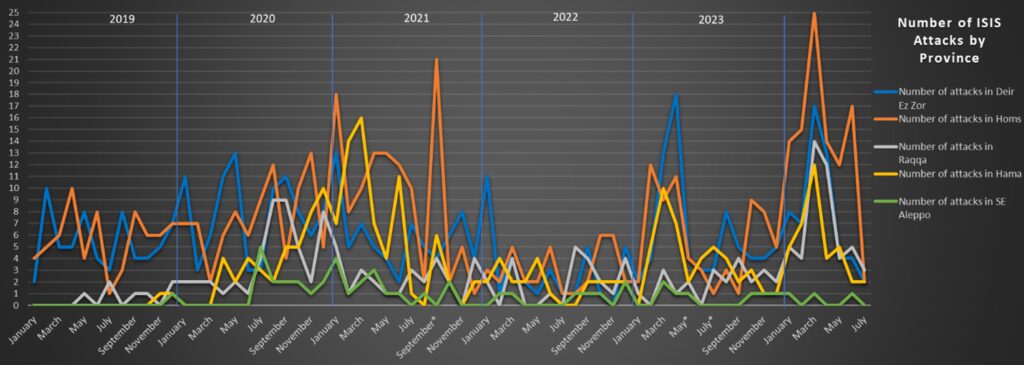
Deir Ez Zor and Raqqa
ISIS expanded its low-level insurgency within the urban belt of Deir Ez Zor in January, when it conducted three assassinations of local security forces. Sleeper cells continued this trend in February, carrying out two assassinations of local pro-regime fighters inside Mayadin city, and again in March and April, with four and three urban attacks respectively. In May, regime security forces captured a small four-man ISIS cell inside Mayadin city. According to local journalist Zain al-Abidin, three of the detained men were serving in the pro-regime National Defense Forces (NDF) and their leader had entered the city from northeast Syria during the regime’s 2022 reconciliation initiative – a security risk this author had highlighted at the time. There were no recorded attacks in Mayadin city in June, however, there was an IED attack inside Deir Ez Zor city and a small arms attack inside Shamitiyah. There were no recorded urban attacks in Deir Ez Zor in July.
On July 12, two soldiers were reported killed in an unspecified part of Deir Ez Zor. On July 16, a truck carrying three men affiliated with the regime’s 4th Division hit a mine near Kabajb, killing one and wounding two. These were the only documented attacks in July.
In Raqqa, ISIS activity dropped back down to more typical levels in May following two months of extreme activity. Since then, the group has maintained a low-level but robust insurgency focused in the desert between Resafa and Jabal Bishri. This trend continued in July despite the overall severe decline in activity across the Badia. On July 3, ISIS cells ambushed a group of locals outside the village of Buhamad. Local news pages reported hundreds of sheep stolen and killed and several shepherds missing. As locals went in search of the missing men, they too came under attack. By the end of the day, seven civilians and three local members of the regime’s National Defense Forces (NDF) had been killed.
On July 13, three soldiers were killed by a mine or IED while conducting a patrol in an unspecified part of southern Raqqa. The next day, ISIS cells attacked a small convoy of oil tankers traveling near the Wadi Obaid Oil Field in southeast Raqqa, destroying two of the trucks and killing both drivers with small arms fire.
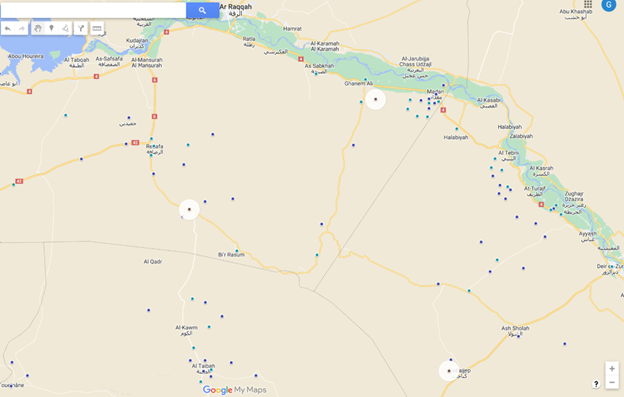
Homs
ISIS activity in eastern Homs decreased in December 2023, but remained focused around the Doubayat Oil Field, which the group had temporarily captured in November. January likewise saw most ISIS activity concentrated in this area, though the group also expanded operations west into the desert just south of Palmyra and Arak. In February, ISIS largely abandoned the southern Palmyra front, likely because of pro-regime ground and air operations, and shifted its focus to the Taybeh sector north of Sukhnah and the Jubb Jarah mountains north of Palmyra. This focus continued into March, with activity remaining concentrated in the Sukhnah-Taybeh-Kawm axis in both April and May. However, security forces continued to largely stand their ground and June saw ISIS once again shift its attacks to the Jubb Jarah and southern Wadi Doubayat-Palmyra region, seemingly abandoning the Taybeh-Kawm front. The deployment of significant numbers of Russian-backed 25th Division fighters in early June and the subsequent battles appear to have forced ISIS to largely abandon all eastern Homs fronts in July.
On July 13, a member of the regime’s Military Intelligence Branch 217 was killed somewhere in eastern Homs. On July 31, a member of the Military Intelligence Badia Branch was likewise killed somewhere in eastern Homs.
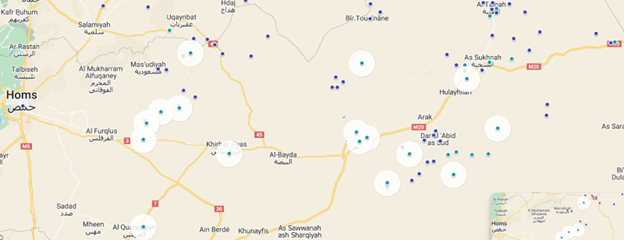
Hama
Significant ISIS activity returned to east Hama in January, when the group conducted five attacks in the province, three being high quality. Likewise, ISIS conducted three high quality attacks in eastern Hama in February. This was the first time eastern Hama had back-to-back months of three or more high quality attacks since spring of 2021. In March, there were five high quality and 12 total attacks, almost all against security forces. However, activity fell significantly in April and May, and even further in June, which had only two documented attacks. July’s activity in Hama was likewise extremely limited.
On July 8, one soldier was killed and two wounded by a mine or IED near the Andarin region along the east Hama-south Aleppo border. On July 13, a soldier was reported killed in the Ithriyah region of northeast Hama.
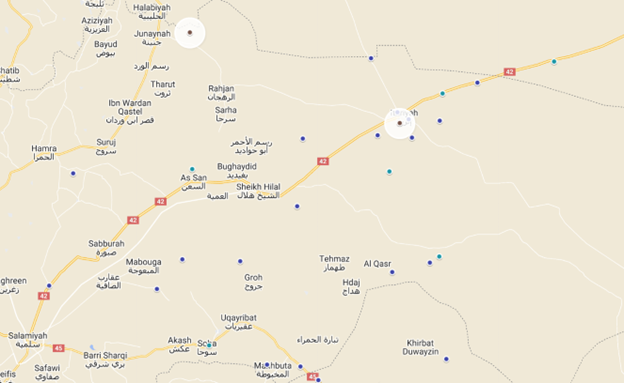
Looking Ahead
July officially marked the end of what can be categorized as ISIS’s first sustained Badia campaign since 2020. Beginning with a localized but significant escalation in October and culminating in a sustained region-wide series of campaigns throughout much of 2024, ISIS showed a renewed energy and strength after years of sustained regime operations. Still, the regime and its Russian and Iranian allies were able to effectively secure all the critical sites across the region, preventing ISIS from making any serious gains. Key to this success has been the deployment of core regime units that had never before participated in the counter-insurgency campaign.
The 4th Division’s “Ghaith Forces” arrived in Deir Ez Zor in early March, tasked with securing the eastern half of the Palmyra-Deir Ez Zor road from increasing ISIS attacks. Since late April, ISIS attacks in Deir Ez Zor have decreased significantly – either a direct result of the new operations or because of resource demands elsewhere. Following this, the Syrian regime and the Russian command then sent the 25th Division to eastern Homs in early June, marking the second front-line unit dedicated to the anti-ISIS fight. The 25th Division – formerly the Tiger Forces – have been among the most important military units operating in northwest Syria. The Tigers, alongside the Russian-commanded Syrian 5th Corps, were central components of the regime’s last major northwest Syria campaign. That operation ended in February 2020 with a Russia-Turkey ceasefire, after which the 25th Division maintained its presence around northwest Syria and expanded its recruitment and training.
The deployment of these two new units, along with the continued use of large numbers of militia fighters from units like Liwa al-Quds (once an important auxiliary force in the regime’s capture of Aleppo city and the Idlib countryside) and the al-Assad Shield Forces (a unit of Alawite veterans that had gone dormant but was injected with fresh Russian funding) has been key for holding off ISIS advances. However, these units, as well as the Russian airpower currently dedicated to supporting them, are the same ones which would be required for any new regime offensive in northwest or northeast Syria. In other words, they are not a long-term solution to the ISIS insurgency problem.
However, as long as these forces are present in central Syria, ISIS may seek to reallocate its own resources to more promising tasks. This could simply involve going back to ground – as the group appeared to do through much of 2022 and parts of 2023 – or shifting its focus to the Kurdish Syrian Democratic Forces (SDF)-controlled northeast Syria, where ISIS cells have already increased their pace of attacks this year. It is important to remember the lessons of 2022, when ISIS activity across the Badia was significantly reduced, yet there remained key indicators of its potential return. Attacks are only one metric and, should this period of calm continue, it may seem like ISIS has “been defeated” while in reality the group has simply gone to ground again and refocused its efforts toward recruitment and training until the security pressure eases.
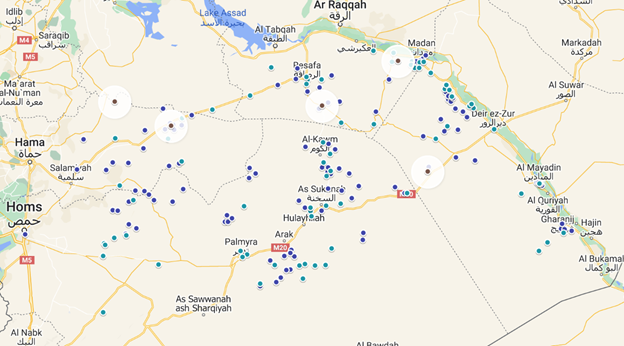
 Eurasia Press & News
Eurasia Press & News
